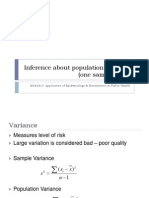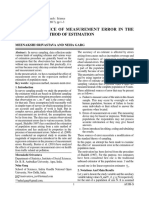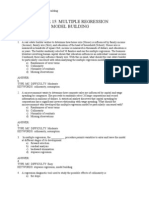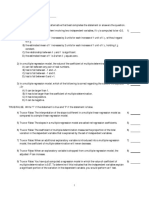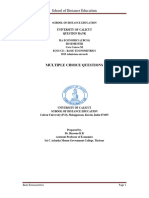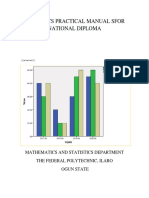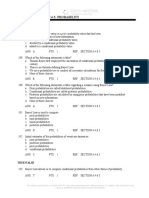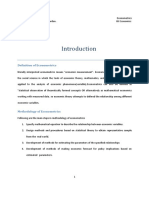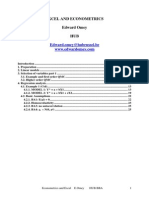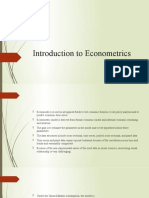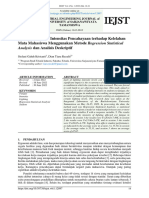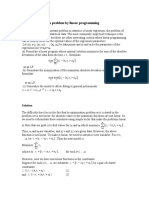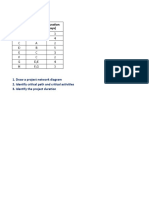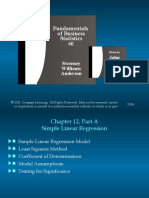0% found this document useful (0 votes)
51 views13 pagesEconometrics Note
Econometrics is the application of economic theory, mathematics, and statistical inference to analyze economic phenomena, aiming to validate theories, provide numerical estimates for economic relationships, and forecast future values. The methodology involves specifying mathematical equations, designing statistical methods, estimating parameters, and making economic forecasts. Regression analysis, a key component of econometrics, models the relationship between variables to estimate or predict values, utilizing techniques such as Ordinary Least Squares (OLS) for parameter estimation.
Uploaded by
FajobiCopyright
© © All Rights Reserved
We take content rights seriously. If you suspect this is your content, claim it here.
Available Formats
Download as DOCX, PDF, TXT or read online on Scribd
0% found this document useful (0 votes)
51 views13 pagesEconometrics Note
Econometrics is the application of economic theory, mathematics, and statistical inference to analyze economic phenomena, aiming to validate theories, provide numerical estimates for economic relationships, and forecast future values. The methodology involves specifying mathematical equations, designing statistical methods, estimating parameters, and making economic forecasts. Regression analysis, a key component of econometrics, models the relationship between variables to estimate or predict values, utilizing techniques such as Ordinary Least Squares (OLS) for parameter estimation.
Uploaded by
FajobiCopyright
© © All Rights Reserved
We take content rights seriously. If you suspect this is your content, claim it here.
Available Formats
Download as DOCX, PDF, TXT or read online on Scribd
/ 13









